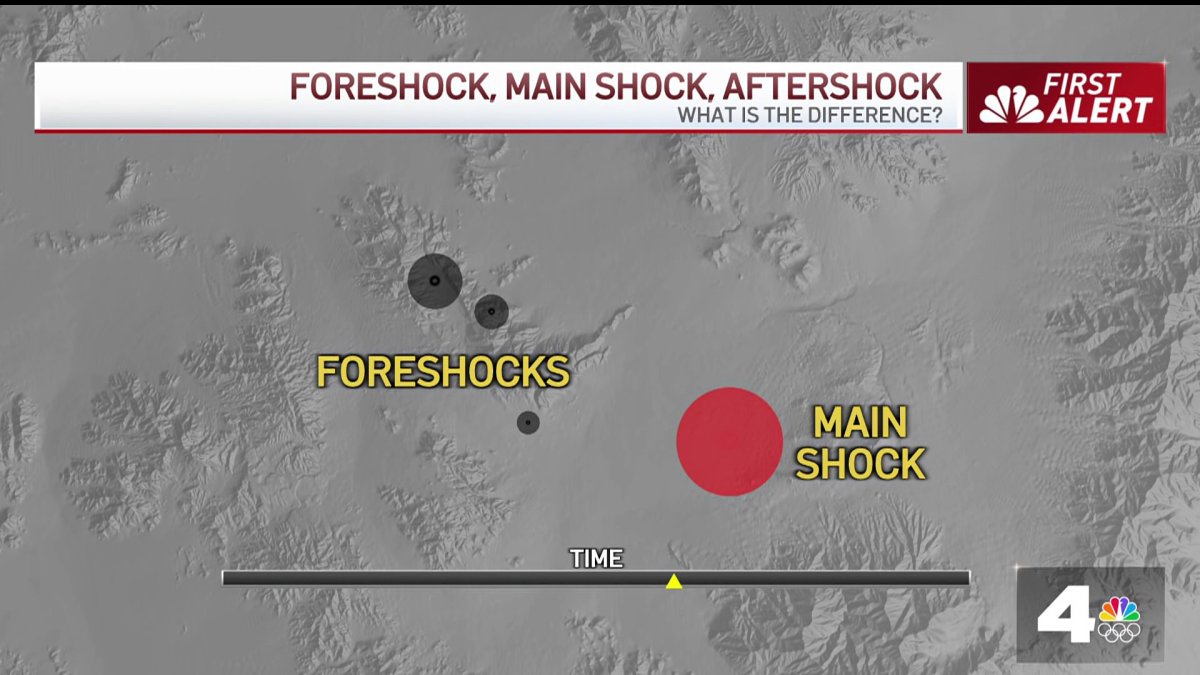
NBC4 Meteorologist David Biggar explains the differences between an earthquake foreshock, mainshock and aftershock on Friday, February 9, 2024.
A magnitude-4.6 earthquake northwest of Malibu caused widespread shaking that was felt early Friday afternoon from the coast to inland areas of Southern California.
The quake was reported just before 2 p.m. about 7 miles northwest of Malibu in the Santa Monica Mountains. More than a dozen aftershocks, the largest of magnitudes 3.0 and 2.7, were reported within an hour in the same area.
"It's got a very robust aftershock sequence," said seismologist Dr. Lucy Jones, adding that the possibility that the quake was a foreshock to a larger seismic event rapidly diminishes over time.
Get Southern California news, weather forecasts and entertainment stories to your inbox. Sign up for NBC LA newsletters.
Shaking was reported throughout the greater Los Angeles area, possibly by as many as 12 million people. The quake was felt from the LA, Orange and Ventura county coasts, including the South Bay and Long Beach, to inland areas like the San Fernando Valley, downtown LA, Riverside, Irvine and Anaheim.
Some weak to light shaking was also felt in parts of north San Diego County.
Marla Dailey was working in a Thousand Oaks dental office when she felt shaking.
"It was a major jolt," Dailey said. "We all figured out what was going on. The patients were fine, and they continued on with the dentistry. It's always a little nerve-racking."
There were no immediate reports of significant damage. The Los Angeles Fire Department was conducting a damage survey, standard procedure after a greater magnitude earthquake.
The U.S. National Tsunami Warning Center reported that no tsunami was triggered.
There are a series of earthquake faults in the area, but the quake was possibly on the Malibu Coast Fault, which runs along the coastline in the Santa Monica Mountains, Jones said. The fault is near the communities of Pacific Palisades, Westwood, Beverly Hills and Santa Monica. It's eastern end meets the Santa Monica Fault
The earthquake comes on the same date as the deadly magnitude-6.5 1971 San Fernando earthquake. That historic quake lefts dozens of people dead, caused more than $500 million in property damage and raised fears of a potentially devastating dam collapse. Its origin was in the foothills of the San Gabriel Mountains north of Los Angeles, but shaking was felt across a widespread part of the San Fernando Valley.
Also Friday, a magnitude-5.7 earthquake on Hawaii's Big Island caused shaking about 200 miles away on Oahu, including in Honolulu. That quake was not related to seismic activity in Southern California.